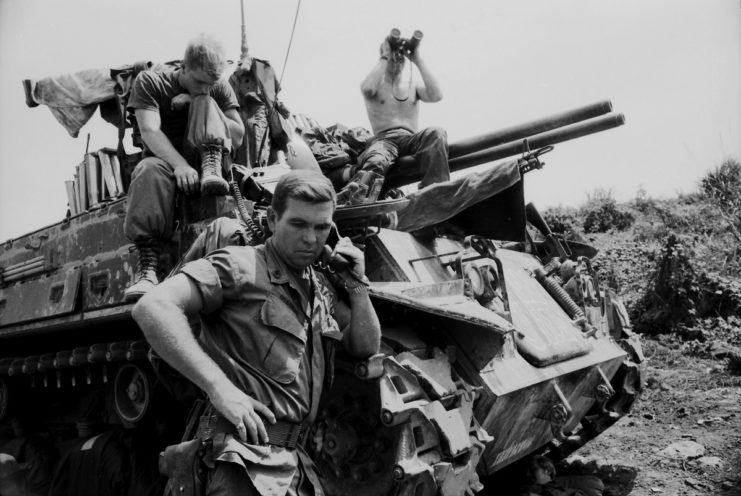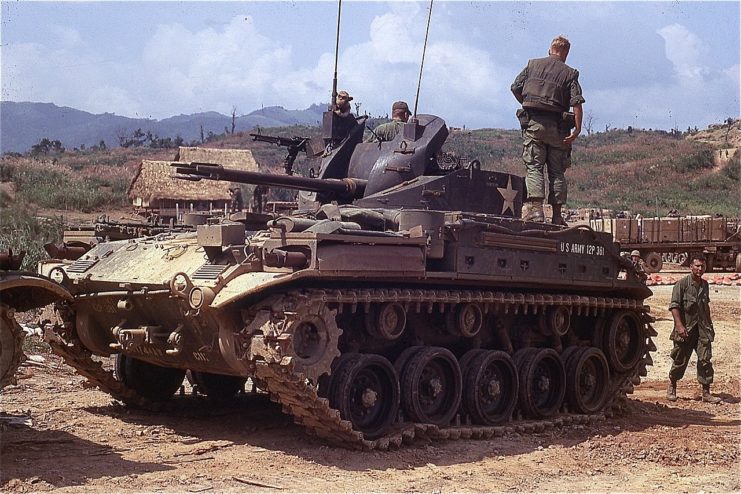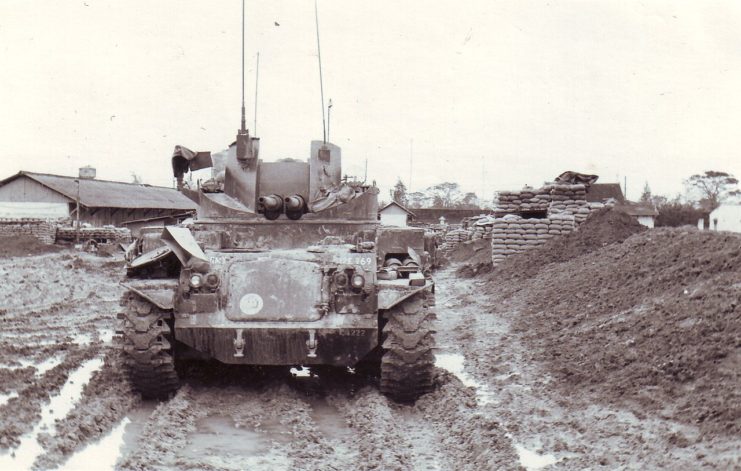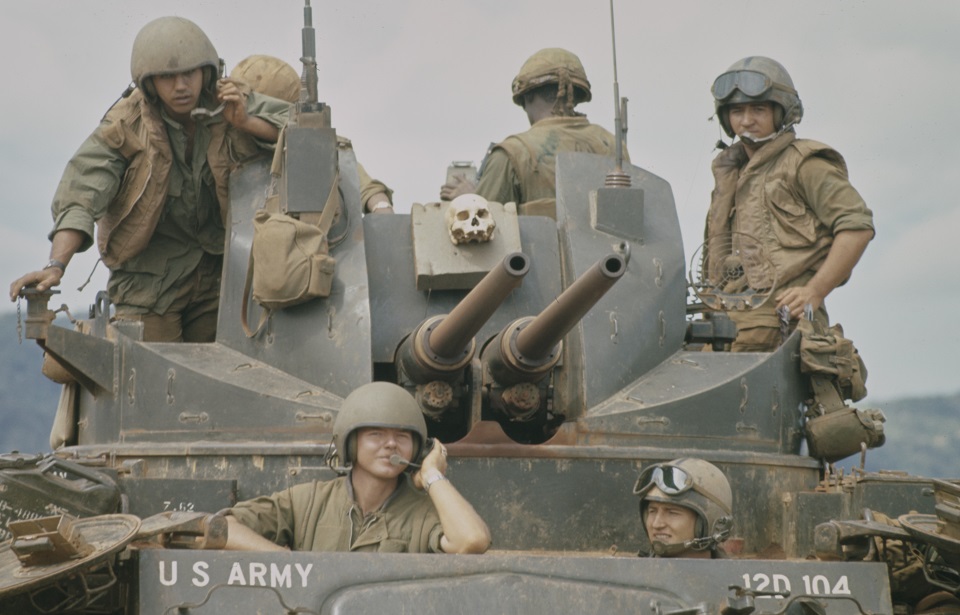From 1966 until the end of the Vietnam War, the relatively small yet extremely deadly M42 Duster was brought out of retirement and used against the North Vietnamese. Although it was designed for air defense, in most of its engagements the M42 lowered its barrels and fired at ground targets. Its double-barreled armament proved to be devastating against enemy infantry, who called it the “Fire Dragon.”
During the Vietnam War, the thick vegetation, difficult terrain, and use of mass infantry charges made the precise application of force rather ineffective. Instead, overwhelming firepower was often a more useful tactic. With its powerful weapons, the M42 fit in perfectly with this style of warfare. The vehicle would become a critical tool in convoy defense and as a perimeter guard at military installations and bases throughout South Vietnam.
M42 Duster

The M42 was created when the US began phasing out the M24 Chaffee light tank and all vehicles based on its chassis in the early 1950s. The M24 was replaced by the M41 Walker Bulldog. During the Korean War, the M19 Multiple Gun Motor Carriage, an anti-aircraft weapon based on the Chaffee, was successfully used against North Korean ground forces. However, this vehicle was phased out along with the other Chaffee variants.
The M42 was built to fulfill the same role as the M19, but this time based on the M41. It used the same armament as the M19; two 40 mm Bofors anti-aircraft guns. Each gun had a rate of fire of 120 rounds per minute, and in total the M42 could provide a continuous output of fire for almost 85 seconds.
They were powered by a 500 hp air-cooled six cylinder engine which gave them an excellent top speed of 45 mph on road. In addition, they were protected by up to 25 mm of armor. 3,700 M42s had been produced when production stopped in 1960. By this time, the M42s were believed to have been made redundant by newer surface-to-air missiles (SAMs) and had mostly been handed over to the National Guard.
However, the machine had its time to shine during the Vietnam War.
The Duster in Vietnam

In Vietnam SAMs had been less effective at low altitudes than anticipated, so M42s were brought back into frontline service to supplement these much more complex systems. They operated in three air defense battalions in South Vietnam. The battalions were bolstered by vehicle-mounted Quad-50s.
As it turned out air attacks from North Vietnam were relatively minor, so the M42s weren’t used much in this role either. Instead, they were put to work in the anti-personnel role.
Many M42s found themselves on the perimeter of military bases, strategically placed to best guard against any attacking foes with their devastating twin guns. During infantry assaults, the M42s were lethal at providing an overwhelming amount of fire downrange. The 40 mm shells could saturate an area with explosions and shell fragments and excel at clearing infantry that was grouped together.
M42s and Quad-50s worked together harmoniously, as both systems had a few shortcomings that the other could make up for. For example, the 40 mm shells had sensitive impact-activated fuses that could be triggered early by thick vegetation in the jungles of Vietnam, but the quad .50 caliber machine guns could rip straight through. Also, the M42s were unable to engage targets closer than 88 feet, but the .50s could.
On the other hand, the 40 mm shells provided an excellent fragmentation effect and could be used in indirect fire. They were also particularly useful against soft-skinned vehicles like cars and trucks, which would quickly be obliterated by the much larger shells.

While they were often found on the edge of bases, M42s participated in ground operations, search and rescue missions, and served as escorts on convoys. On these convoys, the M42s would wipe ambushers off the face of the earth.
11 M42s and five Quad-50s were involved in a rescue mission just before the Tet Offensive of 1968. Combined, these weapons fired 20,000 40 mm shells and nearly 30,000 .50 caliber rounds.
When the US pulled out of Vietnam they left many of their M42 Dusters to South Vietnam’s military while most of the rest were handed back to US National Guard units. The Duster carried on in service until 1988 when it was finally retired after a long career.
